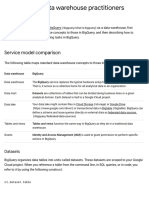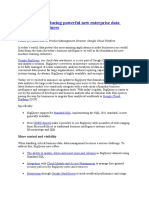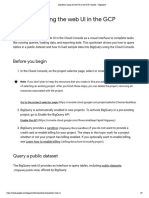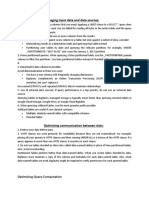0% found this document useful (0 votes)
127 views1 pageFormatted BigQuery CheatSheet
The document is a cheat sheet for BigQuery interview questions, covering beginner to advanced levels. It explains key concepts such as the differences between BigQuery and traditional databases, features like serverless architecture and columnar storage, and details on handling schema changes and duplicate records. Additionally, it addresses performance aspects related to slots and query caching.
Uploaded by
iddrivedownloaderCopyright
© © All Rights Reserved
We take content rights seriously. If you suspect this is your content, claim it here.
Available Formats
Download as PDF, TXT or read online on Scribd
0% found this document useful (0 votes)
127 views1 pageFormatted BigQuery CheatSheet
The document is a cheat sheet for BigQuery interview questions, covering beginner to advanced levels. It explains key concepts such as the differences between BigQuery and traditional databases, features like serverless architecture and columnar storage, and details on handling schema changes and duplicate records. Additionally, it addresses performance aspects related to slots and query caching.
Uploaded by
iddrivedownloaderCopyright
© © All Rights Reserved
We take content rights seriously. If you suspect this is your content, claim it here.
Available Formats
Download as PDF, TXT or read online on Scribd
/ 1























































